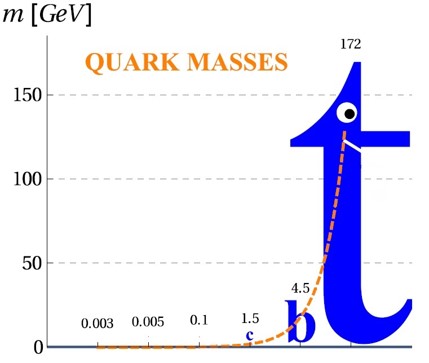The Nature of Flavor
The matter particles in the SM appear in three replications (various 'flavors'), featuring very different masses and hierarchical mixing angles (in the quark sector), which cannot be understood within the SM. Addressing this 'flavor puzzle' is not only important for its own sake but might also lead to further insights, such as on the trigger for electroweak symmetry breaking (EWSB) or on the solution to the strong CP and dark matter problems, and is a focus of NEWFO.
Composite Higgs models can for example explain the hierarchies in the fermion sector by assuming the SM fermions to be 'partially composite'. The Higgs potential is induced radiatively and fermion contributions can trigger EWSB dynamically, intertwining it with flavor physics. An interesting contribution can arise from the lepton sector in models that unify both charged and neutral right-handed leptons in a single representation of the global SO(5) symmetry, while addressing the tiny neutrino masses [1,2]. This setup allows to avoid problematical light top partners (see Model Building) and leads to distinct predictions in lepton flavor physics, in agreement with anomalies found in experiments [2].
A similar, more basic, means for addressing the flavor hierarchies is to assign different charges to the (left- and right-handed) SM-fermion fields under a U(1) symmetry, broken by the vacuum expectation value (vev) of a heavy ‘flavon’ field. Fermion masses (and mixing angles) will then be suppressed by powers of the ratio of this vev over the mass of heavy messenger fermions [3].
[1] A. Carmona, F. Goertz, JHEP 1505 (2015) 002
[2] A. Carmona, F. Goertz, PRL 116 (2016), 251801
[3] Froggatt, Nielsen, NPB 147, 277




